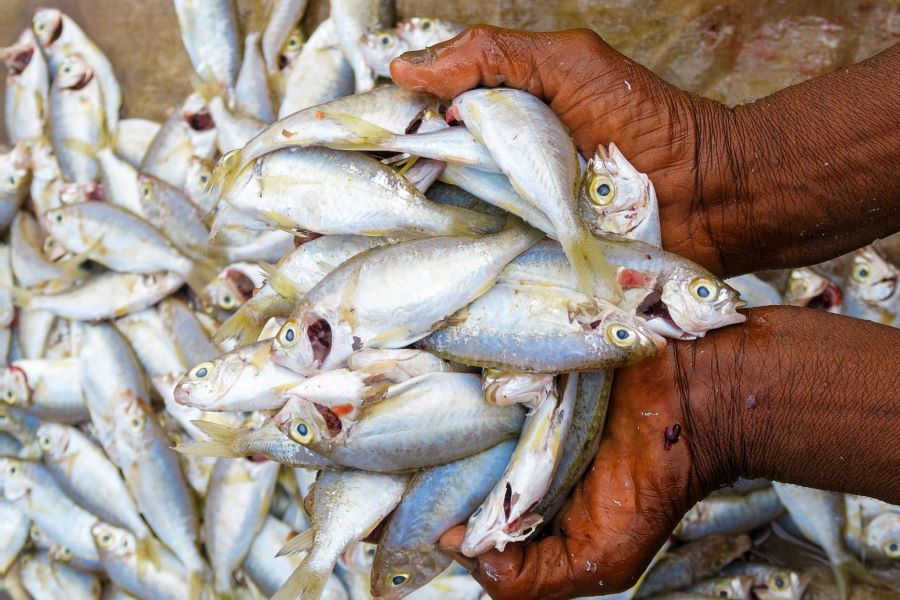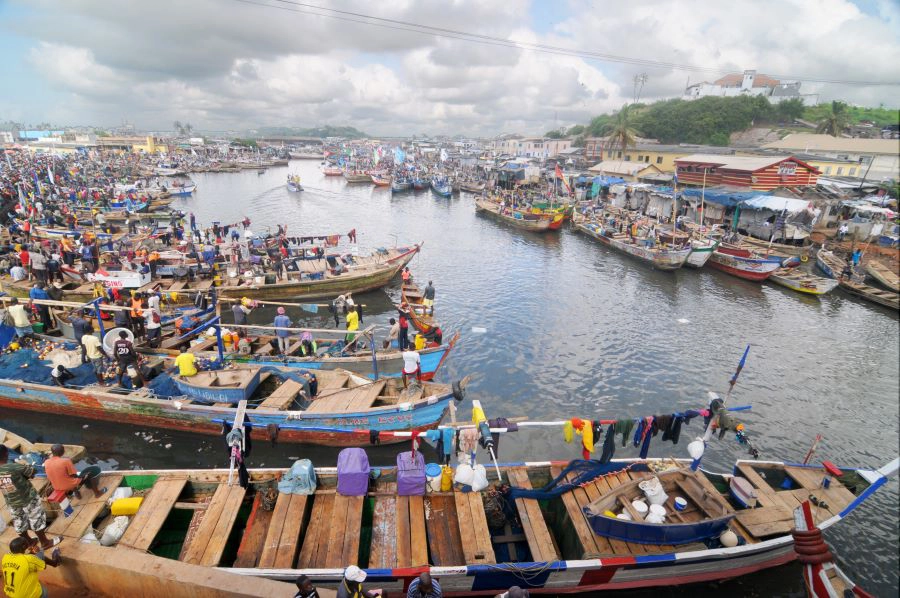Who benefits from the WTO fisheries agreement? Nutrition experts weigh in
Key takeaways
- Ocean fish are vital for nutrition and livelihoods, supplying millions with essential nutrients like omega-3s, iron, and zinc.
- The WTO’s Fisheries Subsidies Agreement aims to protect fish stocks, but its benefits may favor industrial fleets unless equity for small-scale fishers is prioritized.
- Ensuring fair access to aquatic foods requires nutrition-sensitive aquaculture, fewer feed trade-offs, and policies that balance local needs with global sustainability.
Ocean fish are nutrient-rich, providing people with iron, zinc, calcium, and omega-3 fatty acids vital for health. These animals sustain millions globally as food and a source of income. Yet, their access remains uneven. Industrial fishing fleets increasingly compete with smallholder fishers, threatening local livelihoods and food security.
Helping address such imbalances, the World Trade Organization (WTO) recently reached an Agreement on Fisheries Subsidies to curb financial support for illegal, unreported, and unregulated fishing and to limit subsidies that drive overexploitation of global fish stocks.
WorldFish Nutrition Lead and Senior Scientist, Dr. Wanjiku Gichohi, tells Nutrition Insight that although she is optimistic about the WTO fisheries agreement helping local communities reliant on fishing, she worries that if fleets adopt sustainable fishing methods, the benefits might be taken away from small fisheries.

The WTO deal eliminates detrimental subsidies but might mainly benefit small fishermen or primarily impact large fleets. “Ideally, this would mean more stable fish stocks in the long term and a more reliable supply. This is positive for these communities that rely on local fish catches (not imports) for consumption,” she says.
“However, there still remains a risk that large industrial fleets adapt faster to sustainable fishing compared to smaller fleets, and therefore, ultimately, fish and nutrients remain out of reach for those who need them the most.”
Diversifying farmed fish and feed
Nutrition Insight recently spoke to Nicole Franz, a research scholar at the Center for Ocean Solutions at Stanford University, US, who said the WTO fisheries agreement’s benefits will depend on how it impacts small-scale fishers versus industrial fleets.
Franz urged that reducing fish loss, improving management, and integrating fisheries with broader social and food policies are essential for sustainable nutrition and equitable access.
Furthermore, she warned that small, nutrient-rich fish, which are vital for human nutrition, are often diverted to feed farmed fish, creating trade-offs between local diets and aquaculture production.
Farmed fish is growing fast, often depending on small, cheap fish. “A positive way forward on this is in investing in research on alternative feed sources such as insect-based feeds,” Gichohi suggests.
 If farmed fish depend on wild fish for feed, they can directly compete with human nutrition needs, especially in low- and middle-income countries.“The other option is ensuring that aquaculture growth also focuses not only on high-value species but also on the underinvested species accessible to low-income populations, such as tilapia, carp, and catfish. In the future, this should also include nutrient-dense small fish such as dagaa and mola.”
If farmed fish depend on wild fish for feed, they can directly compete with human nutrition needs, especially in low- and middle-income countries.“The other option is ensuring that aquaculture growth also focuses not only on high-value species but also on the underinvested species accessible to low-income populations, such as tilapia, carp, and catfish. In the future, this should also include nutrient-dense small fish such as dagaa and mola.”
Barriers to nutrition
However, if farmed fish depend on wild fish for feed, we ask Gichohi if it solves the nutrition problem. “It is indeed true that the use of edible wild fish for aquaculture feed can directly compete with human nutrition needs.”
“This is especially challenging in many low- and middle-income countries, particularly where small pelagic fish are central to local diets. That’s why WorldFish and its partners emphasize nutrition-sensitive aquaculture, meaning that aquaculture growth should be designed to minimize feed and food trade-offs, promote local and sustainable feed innovations, and ensure that the benefits of aquaculture reach those most vulnerable to malnutrition. So equity must be at the center of this growth.”
Many reasons pose barriers to stop women, children, or poorer communities from consuming enough fish.
“In low- and middle-income countries and particularly for communities far from landing or production sites, limited infrastructure, cold-chain facilities, and transport networks make it difficult to preserve and distribute fish before it spoils,” explains Gichohi.
 The task is to harvest, produce, distribute, and consume aquatic foods in ways that nourish populations within just, equitable limits while respecting planetary boundaries.“Economic barriers such as rising fish prices, competition from export markets, and low purchasing power further restrict access for low-income households.”
The task is to harvest, produce, distribute, and consume aquatic foods in ways that nourish populations within just, equitable limits while respecting planetary boundaries.“Economic barriers such as rising fish prices, competition from export markets, and low purchasing power further restrict access for low-income households.”
Controlling sustainable fish consumption
According to the recent EAT–Lancet Commission’s report, fish consumption is higher than the Planetary Health Diet (PHD) reference worldwide (comparing the 2020 food intake data with the recommended PHD). Africa, East Asia, and the Pacific are drivers of “overconsumption” while fish levels in other areas continue to fall short of what is advised.
“The report reinforces the unique nutritional benefits of fish and seafood as key sources of protein, particularly in developing economies, and as essential sources of omega-3 fatty acids that support brain development in children and cardiovascular health throughout life. It also recognizes that sustainably produced seafood has relatively lower environmental impacts compared to many terrestrial animal proteins. Wild-capture fisheries in particular don’t require land, freshwater, or feed,” states the Marine Stewardship Council (MSC).
It adds that if the EAT-Lancet report findings are implemented, global consumption of fish and seafood could rise, with aquaculture contributing to this increase, while wild fish stocks remain vital.
However, WorldFish explains that this does not necessarily mean that fish consumption should be reduced in places where it is overconsumed, as the fish in the PHD assumed other animal proteins are also consumed in moderate amounts.
In regions where fish is the dominant source of affordable and available protein, higher intake is expected, such as in Africa. East Asia, on the other hand, has a wide variety of animal food sources, but its high consumption is fueled by urbanization and fast economic growth.
“The PHD provides a global framework, but interpretation must be context specific. For regions where fish is the backbone of diets and a vital source of nutrients of public health importance, exceeding global reference levels does not automatically imply overconsumption; it reflects dietary reliance on aquatic foods where alternatives are scarce or less accessible,” says WorldFish.
“The task ahead is to ensure that aquatic foods are harvested/produced, distributed, and consumed in ways that nourish populations within just, equitable confines while respecting planetary limits.”
MSC concludes: “We must end overfishing, protect the wider ocean, and make sustainable choices.”
















